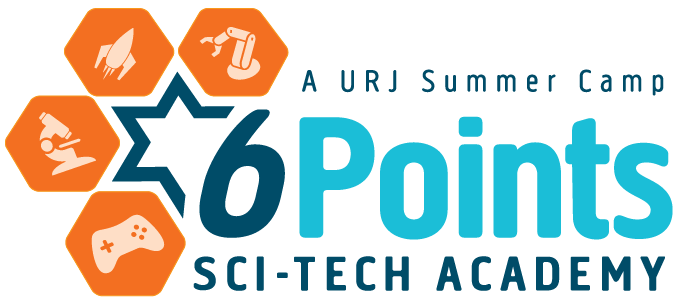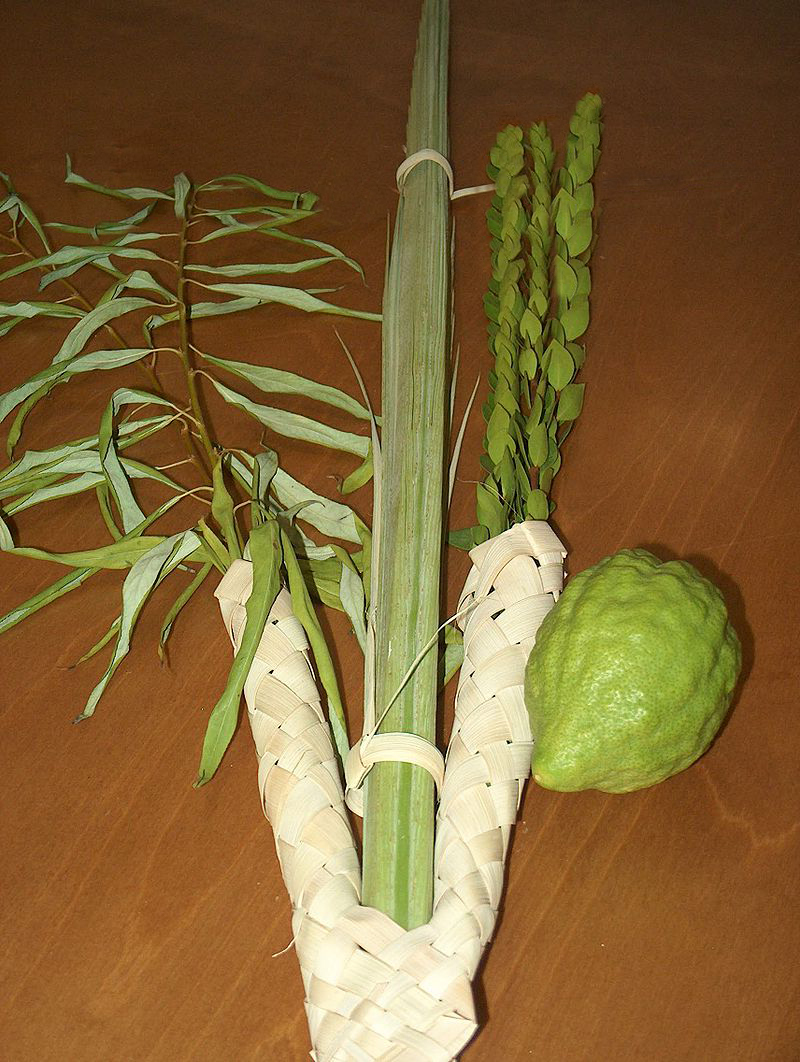The Lulav, Etrog, and You
How our human body connects to a religious holiday about the harvest
Right after ringing in the Jewish New Year with Rosh Hashanah and asking for forgiveness on Yom Kippur, another holiday comes around where we share thanks and take time to appreciate the abundance and fragility of life. This holiday, called Sukkot, is celebrated for an entire week and involves the building of a Sukkah, an open-air hut on the land, and the shaking of the lulav and the etrog. These traditional Sukkot items are known as the four species, and include the etrog (a citrus fruit), the palm branch, the myrtle branch, and the willow branch. These branches are bound together to create one larger plant and are called the Lulav. While there is no written word in the Torah or Talmud about what these four species symbolize, we can find a great deal of meaning in examining a deeper connection to the human body. The etrog is the heart, the palm is the spine, the myrtle is the eye, and the willow is the lips. Diving into this interpretation can help our bodies align with both a spiritual and a scientific connection to this holy week-long holiday.
The etrog, which looks like a larger, bumpier lemon, provides a lovely citrus smell and is one of the sacred four species that are shaken daily during Sukkot. While the etrog can be consumed, it smells much better than it tastes, and it’s usually not recommended due to the amount of pesticides that may be sprayed on it during the growing process. Representative of the human heart, the etrog can remind us both of our spiritual feelings towards God, as well as help us understand how we stay alive. Many people say that we follow our hearts when making decisions, and this remains true when it comes to religion. Listening to prayer and understanding the teachings of our tradition can help our hearts make the best decisions for us. The etrog, symbolizing this essential body part, can demonstrate that being thankful to God not only for being on this Earth, but also for the incredible food that we can grow, can lead to a more peaceful and positive viewpoint. Our heart health can have a direct impact from being grateful and can lead to better sleep, decreased chronic pain, and more. Seeing the etrog as our heart can provide these deeper connections, which can help both our physical and spiritual well-being.
If the etrog is the heart due to its rounded shape, then the palm branch, standing straight and tall, makes perfect sense to symbolize our spine. Thinking of the palm as the spine can also tie into how we need to be connected and communicative with both our spiritual community and our connection to God. The spine has 24 vertebrae stacked upon each other with gel-like discs between them and ligaments that keep them together. The spine not only serves as an integral form of structure for the human body, but also provides a strong barrier shell for the spinal cord, an essential anatomical piece that provides nerve endings and messages from the brain to the rest of the body. For example, if we wanted to pick up a book, the brain would send a message to our arm through the spinal cord to make it happen. On Sukkot, we can see the palm branch as the spine/spinal cord sending the message from us (the brain) to God (the hand), providing a deeper way to express our thanks and blessings.
The myrtle branch symbolizes our eyes, the way that humans can process sight as well as understand a large portion of the world around us. Seeing the myrtle in this way can help us understand how we can “see” God all around us and learn an interesting connection with blindness and the Jewish people. There are many times in the media where the main character will scream to the sky, shouting for a sign from above. Some like to use humor in this call to prayer, displaying a large billboard or road sign, while others choose a more nonchalant path with God being presented as simply the breeze rustling the leaves or a familiar tune being played. No matter the size of the “sign,” the message is still the same; we can see God all around us, using just our eyes and our belief. On the scientific table, studies have found that Jewish people are affected more by different eye conditions. One study that ran in 2019 found that a specific gene that creates night blindness and myopia is highly prevalent in Ashkenazi Jews. Furthermore, in 2023, a new article was released that focuses on retinitis pigmentosa (rod-cone dystrophy), another factor in night-blindness, and found that it is much more likely among Israeli citizens than American citizens (with Ethiopian Jews representing a larger portion of the study). So the question becomes apparent: how can we see God if we’re losing our sight? We look back at the myrtle branch. We know that it’s not actually eyes, but we can still put our faith in the fact that we can see God with it, in the growth of our crops and the miracle of rain. We can see with more than just our eyes, and we can feel God’s presence without having to look.
The willow is the final plant in the bundle that makes the Lulav branch. Its leaves are longer than the myrtle, a willow tree hangs low, with secrets seemingly hidden between each drooping branch, much like its symbolic counterpart: the lips. The biggest connection our lips have in a religious aspect is that it’s our way of praying. “Adonai, open up my lips, so that my mouth may begin to pray” is an integral part of weekly services and how we begin our Amidah, the call to prayer. While the heart and spine are essential ways of keeping the human body alive, and the eyes allow people to recognize patterns and behavior, the lips are our way of communicating fully with God and with each other. Much like our fingerprints, everyone has lips that are special and unique. All 7.8 billion people and not one lip print alike. This difference that helps us stand apart from each other allows us to think more positively about the fact that there are so many people on this Earth; not a single person is exactly like us, and yet we were still created in the image of God, B’tzelem Elohim, a factor that binds us together. Looking at the willow as a part of the Lulav branch, we can see that using our lips to share our prayers is so important, but it can also help us discover how unique we are to then communicate it to others.
Heart, spine, eyes, and lips are not just parts of the human body, but also symbolic interpretations of the four species that we shake on Sukkot: the lulav (palm, myrtle, and willow) and etrog. Taking this deep dive into the bridge between science and spirituality, we can discover more about ourselves and the ways our bodies work without having to compromise on belief. This Sukkot, challenge yourself to think of how you can interpret the four species of your own; maybe they’ll lead to a new Taglit (discovery) waiting to be uncovered.
Saryn Taylor
Communications Coordinator
URJ 6 Points Sci-Tech Academy

